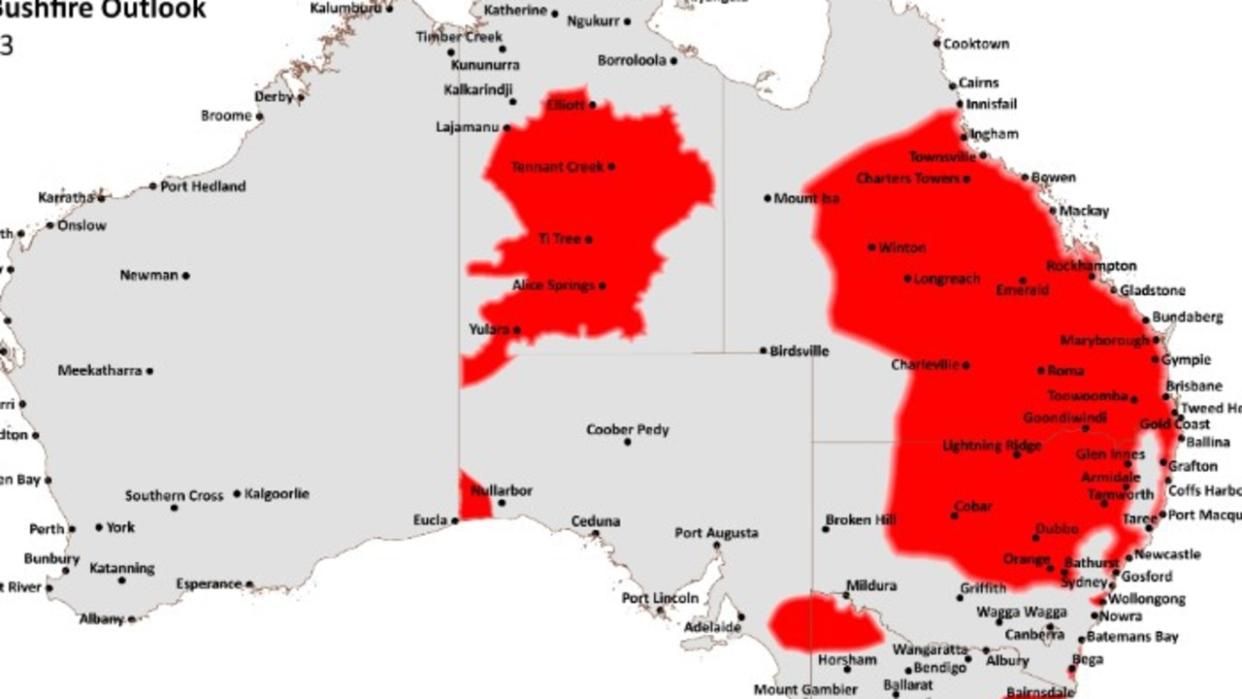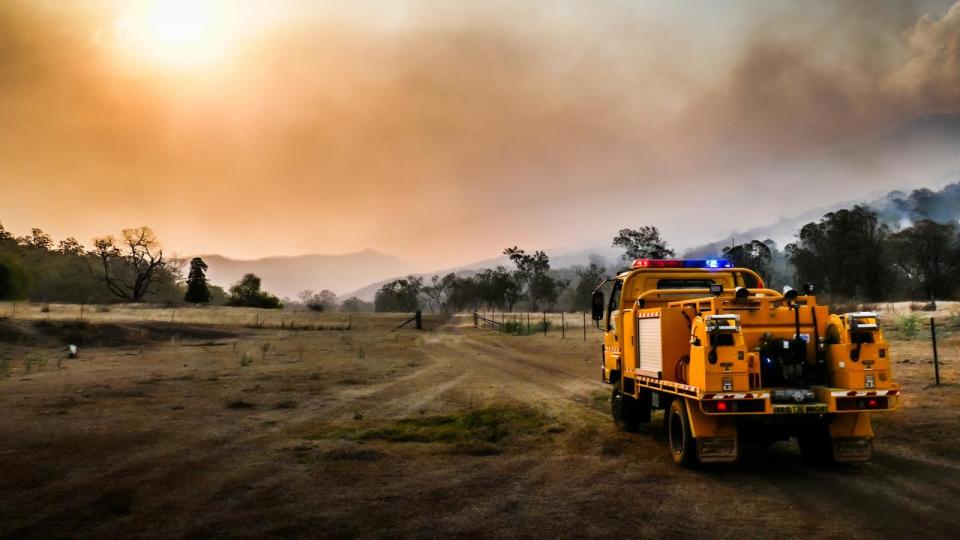Horror map shows millions under threat

A disturbing map released by the Australasian Fire Authorities Council shows millions of Australians face an increased risk of fire in the coming months.
Released as part of AFAC’s spring 2023 bushfire outlook, the red-zoned map engulfs millions of residents from Townsville in North Queensland to Wollongong in NSW and northwest Victoria.
The amplified fire hazard also spreads to Central Australia and the Nullarbor borderland between South Australia and Western Australia.
AFAC defines increased risk of fire as “the likelihood of an increased number of significant bushfires occurring in the outlook period compared to average”.
AFAC chief executive Rob Webb warns that Australians need to begin preparing immediately.

“Fire is a regular part of the Australian landscape in spring,” he said.
“Wherever you live, work or travel, now is the time to plan and prepare.
“Understand your risk, know where you will get your information and talk to your family about what you will do.”
The increased risk comes from a mix of high fuel loads, warmer and drier conditions and below average rainfall, and AFAC said changes in climate had raised the threat.
“The tendency for fire seasons to have elevated fire dangers more frequently and for elevated fire danger to appear earlier and later in the season is an observed trend in Australia’s climate,” the seasonal outlook states.
“The frequency of dangerous fire weather days has increased significantly in recent decades across many regions of Australia, especially in the south and east.”

Emergency Management Minister Senator Murray Watt said the federal government had begun preparations for the season.
“These include an additional national large air tanker on hand to respond quickly and a new fire danger rating system to be able to more simply explain to people what the fire risk is,” he said.
“We have also begun building a national stockpile of items that are needed in disasters, like emergency accommodation, backup generators, food and water as we continue to do what we can to be as ready as possible.”
In 2022 the government unified separate federal emergency management agencies to create the National Emergency Management Agency, which it hopes will make disaster management more efficient.


